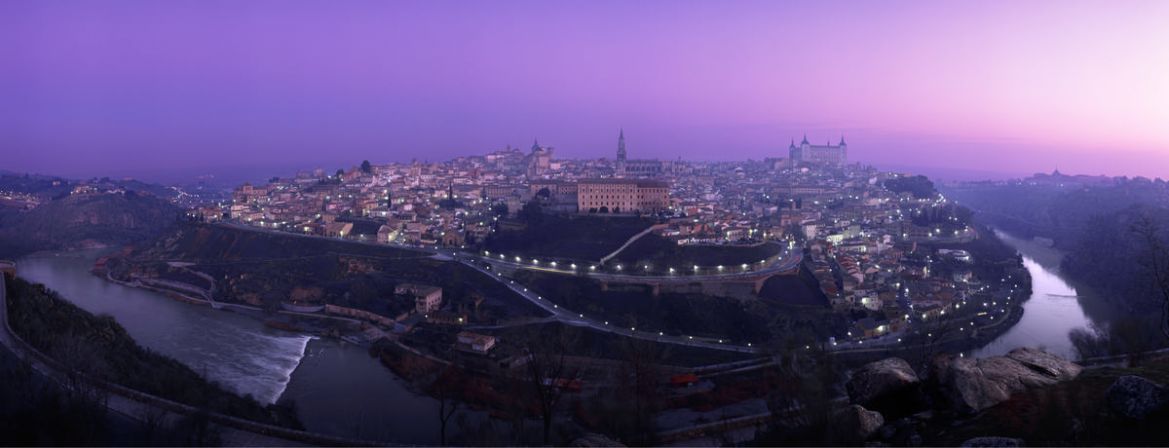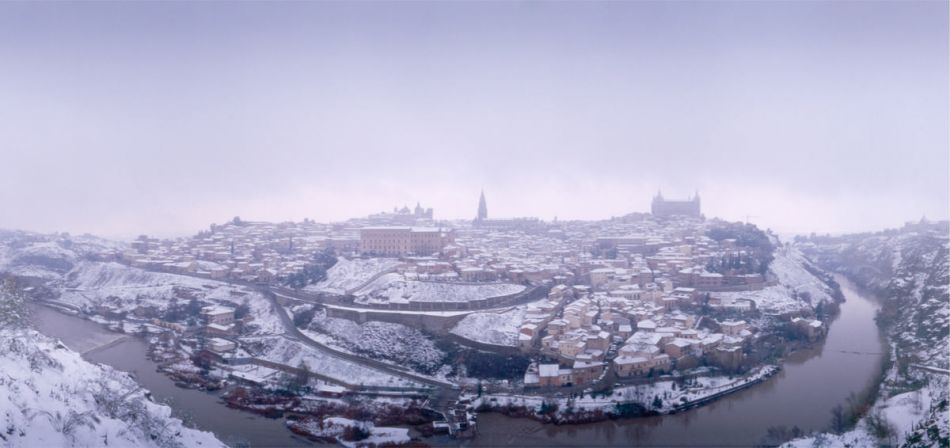Toledo
Descended from converse Jews from Toledo, St Teresa had no relationship with Toledo until the beginning of 1562, when she set off for the Castilian city at the request of her superiors to help and support Doña Luisa de la Cerda, a notable lady of Toledan society, after she had fell into deep depression following her recent widowing.
On her arrival in Toledo, she moved into Doña Luisa’s home in what is today known as the Palace of Mesa, today used as the Royal Academy of Fine Arts and Historical Sciences of Toledo. She was to spend one winter there, lending support and consolation not only to Doña Luisa, but also to everything related to everyday life in the Toledan Palace.
Toledo marks an essential stage in the life of St Teresa, since it was here where, during the long winter nights, when she was in her bedroom accompanied by only candlelight, she started to write down her thoughts, concerns and intentions, giving rise to her extensive literary work. At the same time, Toledo is where, thanks to her good work, she earned an excellent reputation among influential ladies at the Royal Court, which was to be very useful for her later foundation work and the spreading of the Carmelite message.
Teresian Places
As in many other places in Spain and thanks to a rich merchant, Martín Ramírez, who, on his deathbed, left her money to found a church, St Teresa founded a convent in the capital city of La Mancha in 1569.
Initially, the convent (or “Dovecot of the Madonna”, which was how St Teresa liked to call her foundations) was located in a house on Calle San Juan de Dios in the heart of Toledo’s Jewish quarter.
One year later, the Convent of the Barefoot Carmelites of St Joseph, the fifth of her foundations, moved to its present-day location on Plaza de Santa Teresa de Jesús, which is very close to the Gate of El Cambrón. The convent became the fifth to be founded by St Teresa and meant that the Saint was to spend long periods of time in our city.
In 1577, St Teresa returned to Toledo and spent time as a recluse in her convent. Here, she returned to writing her “Autobiography Life” and was to begin “Las Moradas”, a mystic masterpiece that ended St Teresa’s literary circle and closed her period in the city of Toledo.
Municipal Tourist Board
Plaza del Consistorio, 1
45071 Toledo
925 25 40 30
www.toledo-turismo.com


